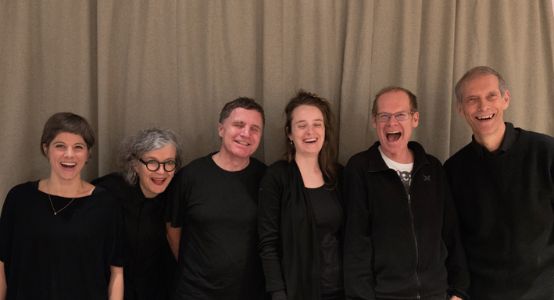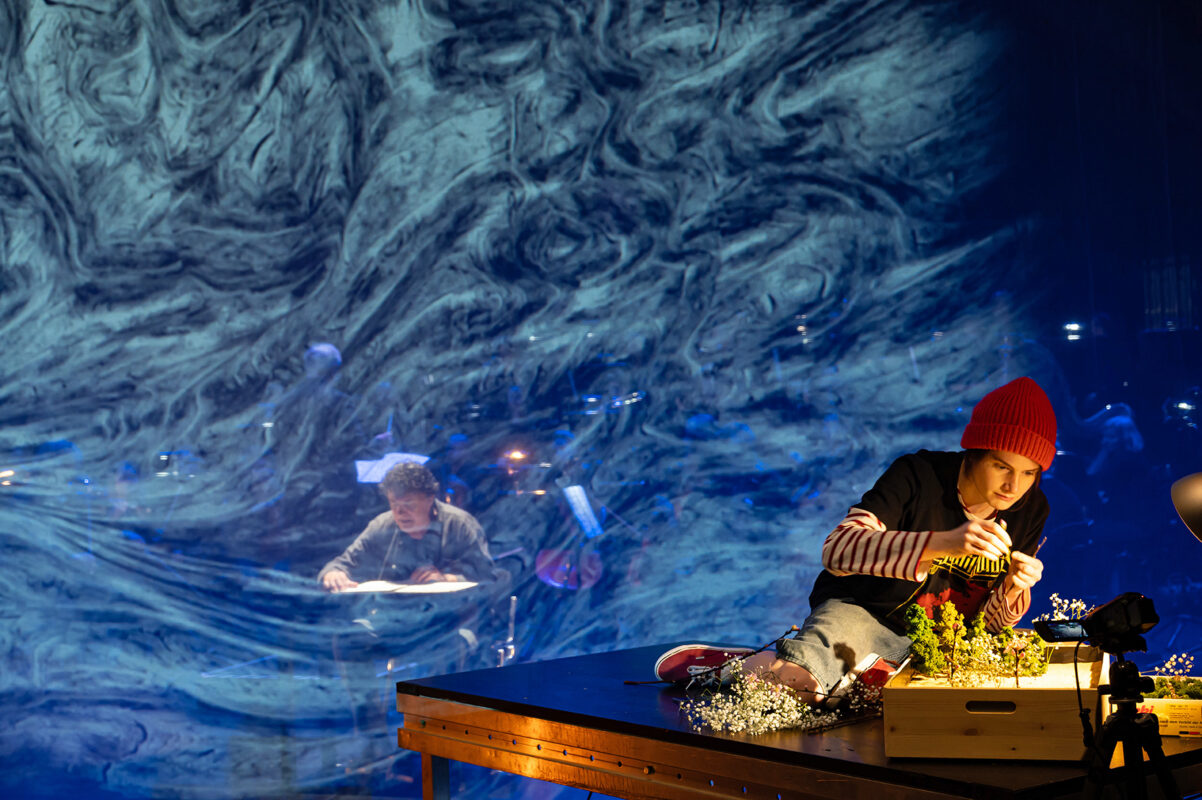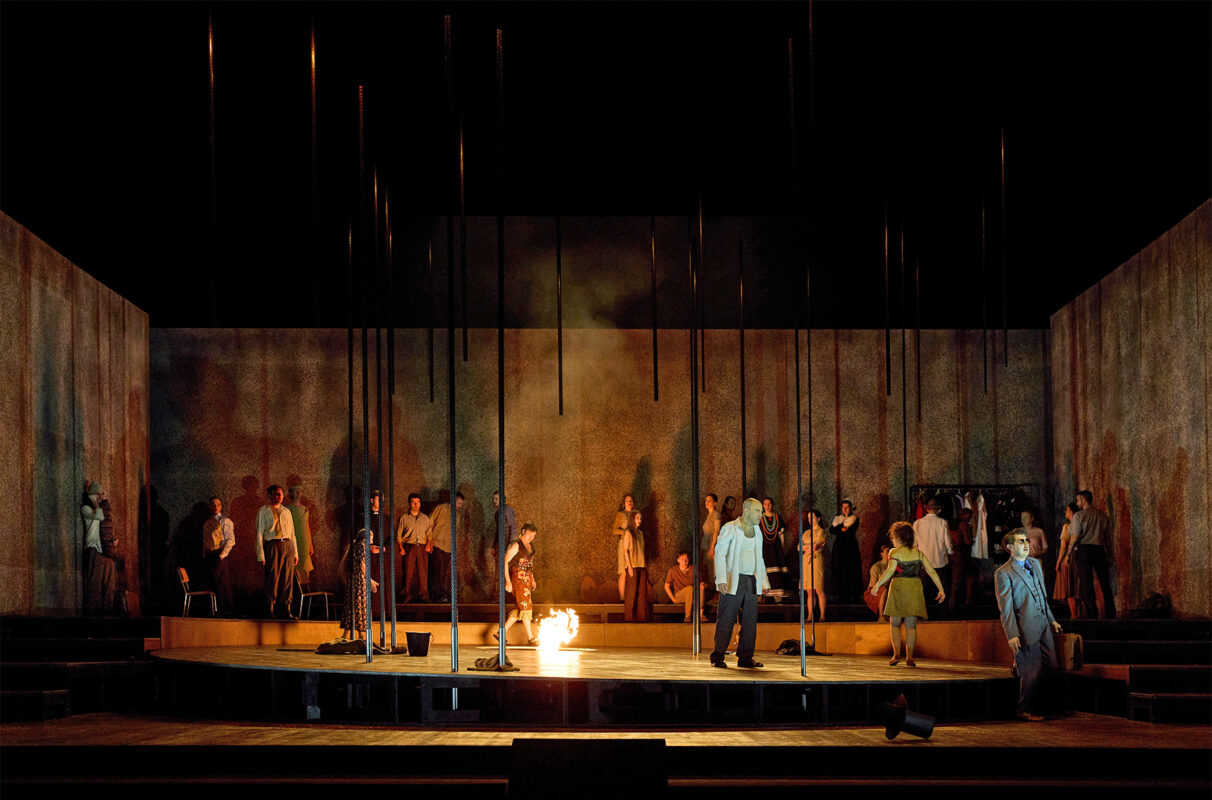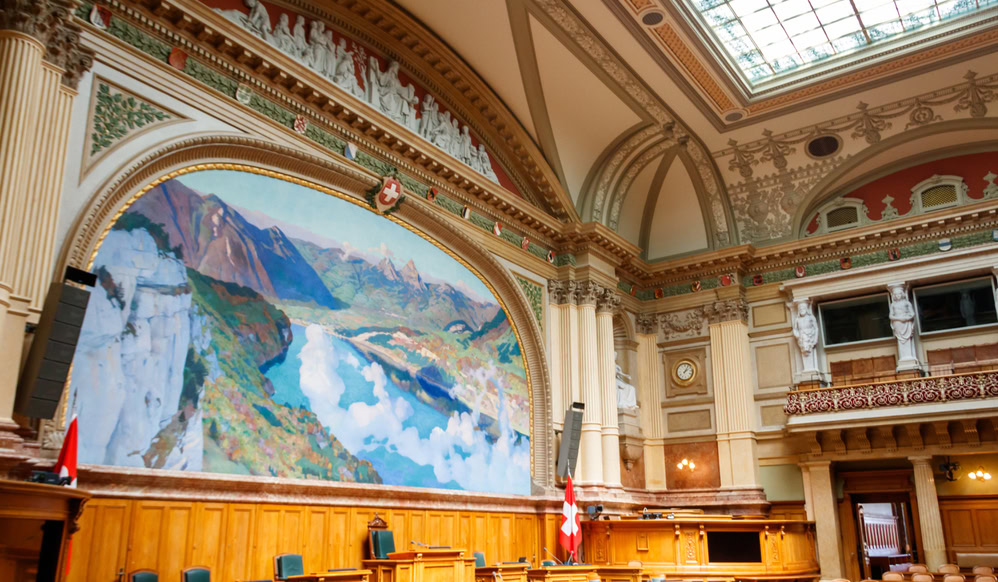Loud at the table
About eating and drinking and singing in general and in particular

Cooking may not yet belong to the Artes liberales, but it is undisputed that it has risen to the rank of a ninth, tenth or whatever art in recent decades. What's more, it far surpasses almost all the good old arts in terms of charisma and aesthetic taste. The only thing it can't quite keep up with is the prices on the art market, but people are willing to pay as much for an evening with a top chef as they would for one with Anna Netrebko. This shows just how much the incessant communication work via cookery programs and books has paid off. The amateurs have long been involved here. Unfortunately, there is no Jamie of spectral music.
On the other hand, Sancta Innovatio, the patron goddess of new music, has also arrived at avant-garde cuisine. Classical four-courses are overcome, sweet and peppery counterpoint is practiced, molecular tonality is explored, and even the extended techniques appear in the use of moss and ash - it just has to be digestible. In this respect, it is astonishing how rarely crossovers are dared, i.e. Kurtág combined with nouvelle cuisine, Lachenmann with Stefan Wiesner. Discourse is sorely needed here.
Food and music - not a simple menu
While the truly multi-sensory cross-over is still largely a culinary art of the future, eating together has established itself as part of performance art. It is an integral part of numerous festivals. And not without good reason: the food makes the atmosphere far more relaxed than usual at a concert.
The tavolata with music to be discussed here builds on this, and is thoroughly amusing and fun, as the title itself shows: Loud-mouthed. The newly founded vocal sextet Maulauf invited guests to its first production. The difficulty in this case was not so much that you shouldn't speak or sing with your mouth full. The actors are only recommended to do this during a performance in exceptional cases anyway. And they did so after the performance. What is more difficult is that the audience eats and drinks even when the performance is running. The sound becomes musique d'ameublement. How should you behave?
The balancing act inherent in every cross-over is that two levels have to meet on the same level. This was not entirely successful at the performance at Kosmos Zurich on May 16. It was only served late, during an interval after half an hour. By then you could already feel a little hungry. And food and music remained quite separate from each other. For consumption, there was more of a delicious, but somewhat cheese-heavy aperitif riche than a veritable menu. The structural relationship between the normal food and the "food of love", i.e. the music, remained ephemeral.
An opulent dish of voices
This makes the vocal menu all the more convincing, as this ensemble is of the highest quality. The voices of Irina Ungureanu, Isa Wiss, Dorothea Schürch, Urs Weibel, Mischa Käser and Urban Mäder are not only virtuoso, but also very different. They come together as a collective and yet all retain their own character. Each and every one of them gets their solo, one more delicious than the other. One of them gives a raspy speech, the other pushes his chair through the crowd, ranting. But there is barely time for a round of applause before they continue together. They chant individual words at breakneck speed, gradually varying them in repetition, creating new fields of words and meanings that expand and thin out again. Loud and quiet. Sometimes whispering, sometimes shouting. Singing, speaking, gurgling etc., poetic, but also theatrical. You never know whether someone will start an argument or begin to whine in the next moment. The unsavory would also be conceivable, but is thankfully left aside for aesthetic reasons. But this table music is a little uncomfortable in all its coziness.
The central, if not exclusive, textual basis is formed by the already onomatopoetic texts of Ernst Jandl, whose Viennese blues often resonates beyond the boundaries of the genre. New music? Perhaps. Dadaism? A little too. Vocal performance? Certainly, although this group is pleasantly devoid of the self-indulgence that occasionally appears in the voice music virtuosos. What is palpable, however, is the immense subtlety that can be experienced up close, as well as the enormous vocal power. And the audience (around forty people in total) sits in the middle of it all, eats and drinks, is allowed to chat, marvels and is greatly entertained. The encore was also wonderful: a long, straw-bassed grunt that gradually turned into a bright hum.








